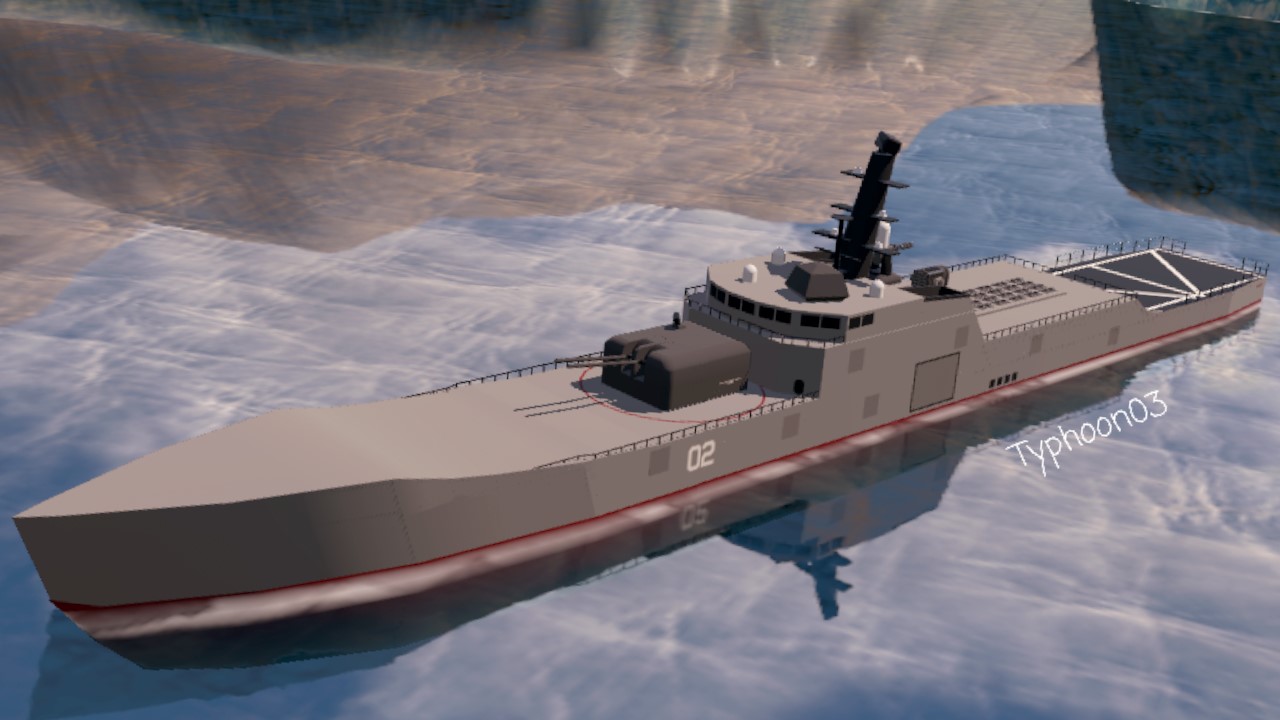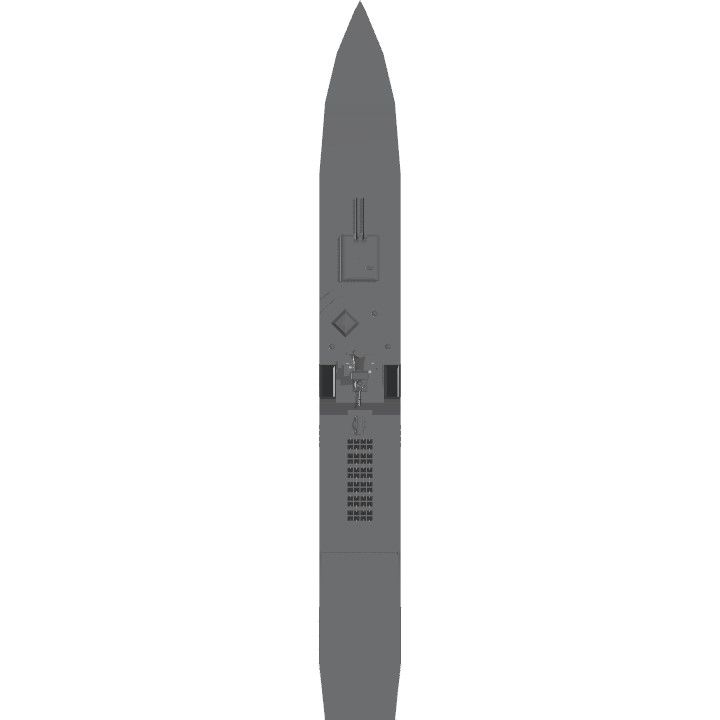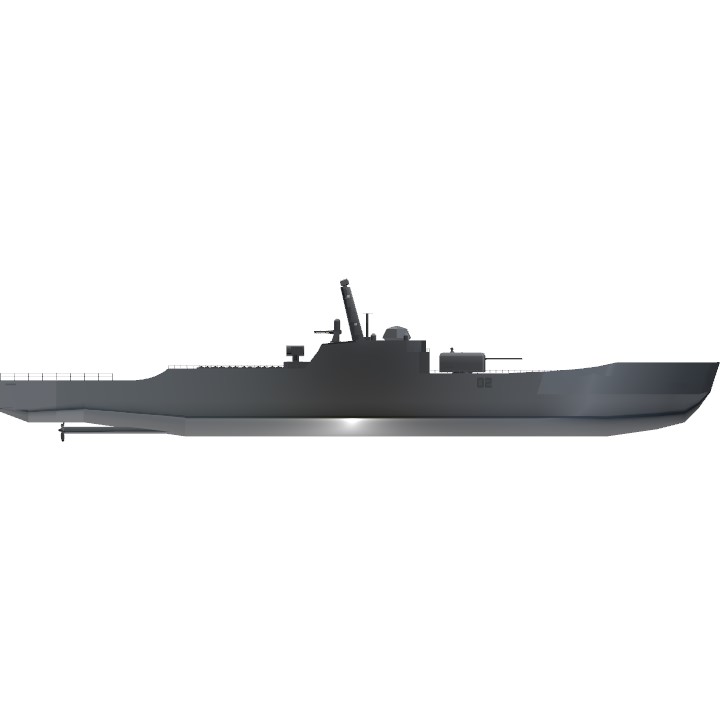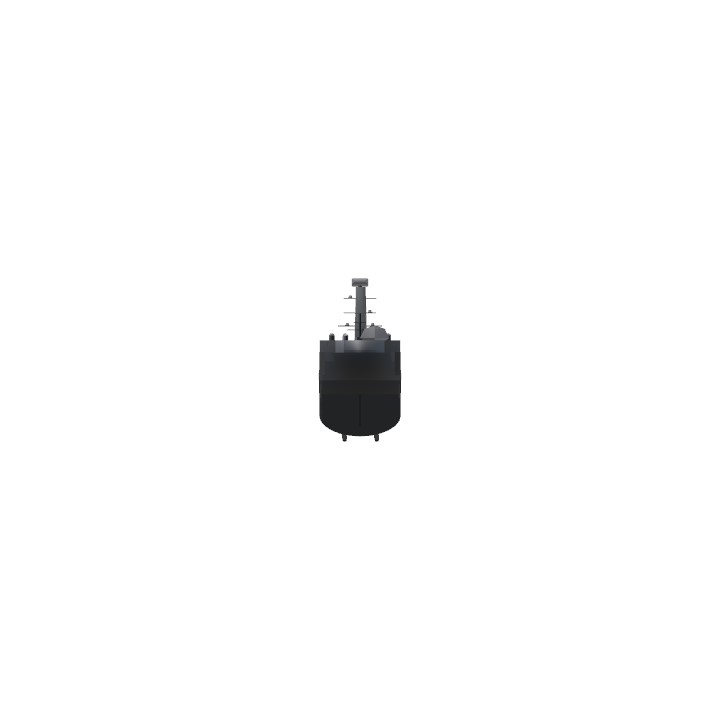Affordable, capable, distributed surface firepower
The Minerva-class is designed as a class of frigates that utilise highly advanced naval gunnery to provide long-range firepower at low cost. Armed with a powerful 203mm naval gun, the warships enable high volumes of munitions to be fired from relatively small platforms.
Controls:
AG-1: Activates main gun.
- VTOL+TRIM to aim.
AG-2: Activates RIM-178 Arrowhead launcher.
- VTOL+TRIM to aim.
AG-5: Activates Phalanx CIWS.
- VTOL+TRIM to aim.
THROTTLE and YAW for movement.
Development
Development of the Minerva-class began soon after the Second Reclamation of the Archipelago, when the Saltwater nation was prospering. However, the Defence Council had the foresight to see a major conflict in the near future, and so put into place a plan to develop a new class of warship that could be produced cheaply and quickly, whilst delivering the high volume of firepower required by major state conflicts. This developed into the Affordable Patrol Strike Frigate program, designing and producing the next generation of small surface combatant. In a parallel development, the Lightweight Stand-off Naval Gun System would be able to strike land and surface targets at up to 400km range, allowing a relatively small ship to achieve a large radius of action with potentially thousands of munitions available per vessel.
The new frigates were designed around the aforementioned LSNGS, with nearly half the length of the warship dedicated to the gun and its magazine space. The forward hull can store up to 1,100 203mm shells along with fuel and stores, whilst the aft section houses propulsion, crew facilities and a total of forty-eight strike-length VLS cells. This gives the Minerva-class excellent endurance whilst retaining a powerful armament that is capable of supporting the main fleet. Each VLS cell can carry a single cruise missile or VL-ASROC missile, or up to four surface-to-air missiles such as ESSM or Sea Ceptor. Also provided are a Phalanx CIWS and an RIM-178 Arrowhead point-defence missile launcher. However, this heavy armament comes at the cost of aviation facilities, which are limited to an exposed flight deck and temporary hanger.
The Lightweight Stand-off Naval Gun System is a twin-mount 203mm electrothermalchemical naval gun capable of firing a variety of guided and unguided munitions. When utilising the M121 rocket-assisted gliding subcalibre shell, the gun can strike at ranges up to 400km. The weapon is capable of a rate of fire of ten rounds per minute, and can fire shells capable of striking air, land and naval targets with a variety of guidance methods, including infrared imaging, radar, GPS and inertial navigation. The forward hull of the Minerva-class is built around the weapon, housing in excess of one thousand shells.
The crew of ninety are accommodated in the mid-aft section of the frigate, in relatively cramped conditions when compared to larger warships. However, the Minerva-class has large storage areas forward that are often used as extra accommodation when voyages are not expected to be of extreme duration. The aviation facilities can accommodate medium-lift helicopters such as the EC725 Caracal, but only for a few days at a time due to the lack of a permanent hanger.
Other than the LSNGS, the Minerva-class is also fitted with forty-eight strike-length S-VLS, eight 12.75inch torpedo tubes, a RIM-178 Arrowhead point-defence missile launcher and a Phalanx CIWS. The frigate can also carry two seaboats or UUVs within the superstructure for mine countermeasures or counter-piracy duties. The long length of the vessel relative to the beam, along with its powerful integrated electric propulsion system allow the ship to reach speeds of up to 36 knots and operate in extremely heavy seas. The sensor suite includes a towed-array sonar, long-range search multipurpose radar (up to 300km) and various navigational and targeting radar systems. However, for long-range air defence the class is expected to operate alongside the Horizon-class air defence destroyer, with its more powerful EMPAR system.
Ninety-six frigates have been built for the Saltwater Navy, more than any other surface combatants. These frigates are grouped into sixteen Independent Strike Squadrons, where they serve alongside Horizon-class destroyers and Cantabria-class replenishment ships. These units are designed to operate unassisted by other elements of the navy, penetrating deep into hostile waters to deliver 203mm naval shells on target, relying on their large numbers and small size for the squadrons to survive against air, surface and submarine threats. The low cost of the Minerva-class makes them well-suited to such doctrine, complementing the larger and more expensive Naval Strike Task Groups and Naval Patrol Squadrons that are much fewer in number and therefore less able to be risked deep in enemy-controlled waters.
LSNGS Shell Variants
M111 - radar-guided air defence shell, rocket-assisted gliding subcalibre munition, 50km range.
M121 - radar-guided anti-surface warfare shell, rocket-assisted gliding subcalibre munition, 400km range.
M121-II - M121 shell modernised with imaging infra-red guidance.
M131 - GPS-guided land-attack shell, rocket-assisted gliding subcalibre munition, 400km range.
M122 - radar-guided anti-surface warfare shell, rocket-assisted gliding full-calibre munition, 180km range.
M132 - GPS-guided land-attack shell, rocket-assisted gliding full-calibre munition, 200km range.
M113 - radar-guided air-defence shell, 30km range.
M123 - radar-guided anti-surface warfare shell, 50km range.
M133 - laser/GPS-guided land-attack shell, 60km range.
M411 - GPS/inertial-guided land-attack nuclear shell, rocket-assisted gliding subcalibre munition, 400km range.
Armament:
x1 203mm Lightweight Stand-off Naval Gun System, x1,100 shells;
x1 Phalanx close-in weapons system;
x1 RIM-178 Arrowhead point-defence missile system, x18 missiles;
x48 strike-length S-VLS cells;
x8 12.75 inch torpedo tubes.
Electronic systems:
SaltSpray multipurpose radar;
Various navigational and fire control radar;
Electronic countermeasures;
Satcom, Datalink, radio, GPS and other antennas;
Fixed and towed array sonar;
Torpedo decoys.
Specifications:
Name: Minerva-class patrol frigate
Role( s ): Anti-surface warfare, land-attack, patrol
Number built: 96 for the Saltwater Navy
Crew: 90 + 16 additional berths
Maximum speed: 36 Knots ( 41 mph )
Builder: SMC Marine
Propulsion: x2 split-shaft gas turbines
Operational ratius: 13,000km
Endurance: Up to 50 days
Price per unit: 650 million per unit
Project cost: 70 billion USD
Specifications
Spotlights
- Inuyasha8215 3.1 years ago
General Characteristics
- Predecessor Minerva-class Frigate
- Created On Windows
- Wingspan 41.9ft (12.8m)
- Length 362.6ft (110.5m)
- Height 82.3ft (25.1m)
- Empty Weight 124,978lbs (56,689kg)
- Loaded Weight 189,415lbs (85,917kg)
Performance
- Power/Weight Ratio 2.169
- Horse Power/Weight Ratio 0.005
- Wing Loading 651.8lbs/ft2 (3,182.1kg/m2)
- Wing Area 290.6ft2 (27.0m2)
- Drag Points 133654
Parts
- Number of Parts 468
- Control Surfaces 0
- Performance Cost 1,781



















:( not a big fan of. Blew up my boats
hi @Typhoon03 this frigate is well done keep it up
Why thank you @MikoyanGurevich165
Thanks for the spotlight! @Inuyasha8215
@MrOofington It was inspired by the Leander, good to know you like it.
Kinda looks like a Leander-class FFG but in all seriousness, nice ship
Tag Requests:
@CapitalismBun
@X99STRIKER
@chibikitsune